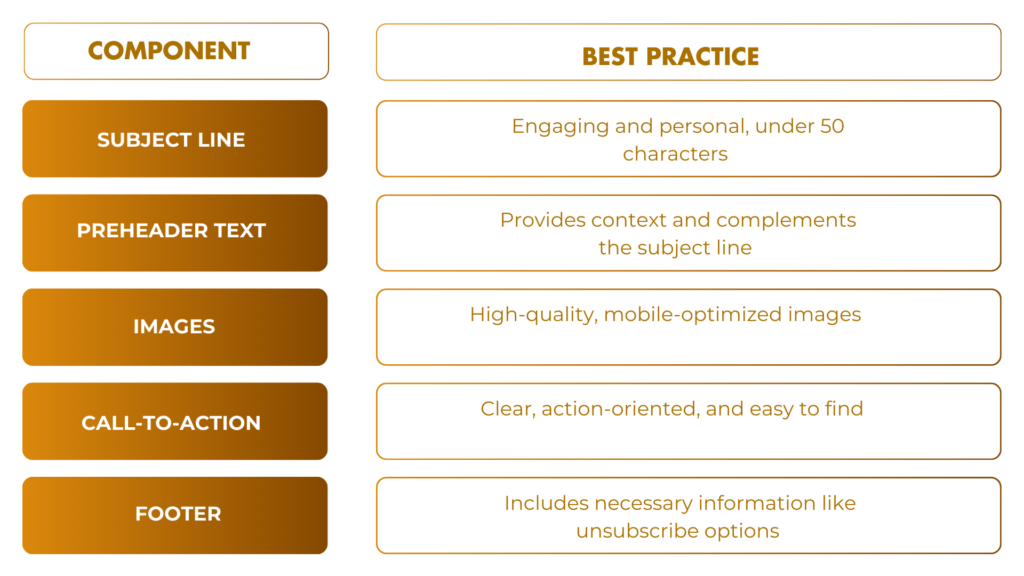Imagine browsing through your inbox, cluttered with promotional emails, when one catches your eye. The subject line is intriguing, the design is visually appealing, and the content feels tailored just for you. You click, engage, and even make a purchase. This is the power of effective email marketing—building connections, driving engagement, and boosting conversions. But crafting such impactful emails requires strategy. In this blog, we’ll uncover the best practices for engaging your audience and increasing conversions through email marketing.
1. Building a Quality Email List
The foundation of any successful email marketing campaign starts with building a solid email list. Without a targeted audience, even the most compelling emails will go unnoticed. Here’s how to build a high-quality list:
- Use Opt-in Forms: Encourage website visitors to subscribe by offering incentives like discounts, free resources, or exclusive content. Make sure the opt-in form is easy to find.
- Segment Your Audience: Not all your subscribers will have the same interests or needs. Segment them based on demographics, purchase behavior, or engagement level. This will allow you to send tailored, relevant emails that resonate with each group.
- Leverage Social Media: Promote your email subscription through your social media platforms, making it easy for your followers to sign up directly.
- Provide Value in Exchange for Emails: Offer something valuable in return for email subscriptions, such as downloadable guides, webinars, or free trials.
By following these practices, you can ensure your email marketing efforts are targeted and relevant, setting the stage for higher engagement and conversions.
2. Crafting Compelling Subject Lines and Preheaders
The subject line is the first thing your audience sees in their inbox, and it plays a huge role in whether or not they open the email. A compelling subject line should capture attention and entice the reader to learn more. Here are some strategies to create irresistible subject lines:
- Keep it Short and Sweet: Aim for subject lines that are under 50 characters to ensure they are fully visible on mobile devices.
- Create Urgency: Use phrases like “limited time offer” or “last chance” to encourage recipients to act quickly.
- Personalize: Including the recipient’s name or referencing their recent activity can make your email feel more personal and relevant.
- Test Variations: Use A/B testing to test different subject lines and identify which ones get the best open rates.
Alongside a compelling subject line, don’t forget about the preheader text. This is the snippet that appears after the subject line and provides additional context. It should complement the subject line and encourage the reader to open the email.
3. Design and Content: Striking the Right Balance
Once your audience opens your email, it’s important to keep them engaged with well-designed content. A clean, visually appealing email design helps convey your message effectively. Here are the key components of email design:
1. Responsive Design
With more than 60% of emails being opened on mobile devices, ensuring your emails are mobile-friendly is crucial. Responsive design ensures your emails look great on both desktop and mobile screens, with images and text automatically adjusting to fit the screen size.
2. Clear Call-to-Action (CTA)
Your email’s goal is likely to drive some action—whether it’s making a purchase, signing up for a webinar, or downloading an eBook. A strong call-to-action (CTA) should be clearly visible, concise, and persuasive. Use action-oriented words like “Get Started,” “Shop Now,” or “Download Free Guide.”
3. Consistent Branding
The design of your email should reflect your brand’s identity. Use colors, fonts, and logos consistent with your website and social media profiles. This helps to build brand recognition and trust with your audience.
4. Visual Hierarchy
Organize your content in a way that guides the reader’s eye through the email. Use headings, bullet points, and images to break up text and highlight the most important information.
5. Email Personalization
Personalized content, like addressing the recipient by name or recommending products based on past purchases, can greatly improve engagement. Dynamic content blocks, where the email content changes based on user behavior, are particularly effective in boosting conversions.
Below is an example of a well-designed email:

Testing and Analyzing Email Campaigns
Finally, to ensure your email marketing is effective, it’s essential to test and analyze the performance of your campaigns. Here are some pointers for optimizing your emails:
- A/B Testing: Test different subject lines, content layouts, and CTAs to see what resonates best with your audience.
- Analyze Open Rates: This metric tells you how successful your subject line and preheader were in encouraging recipients to open your email.
- Monitor Click-Through Rates (CTR): Track how many recipients clicked on links within your email. This helps measure how engaging your content was.
- Track Conversions: Ultimately, the goal is to convert readers into customers. Monitor how many recipients took the desired action after reading your email.
By constantly testing and analyzing your email campaigns, you can refine your strategy and boost both engagement and conversions over time.
Conclusion: Elevate Your Email Marketing with Akoi’s Expertise
Email marketing is a powerful tool for engaging customers and driving conversions. By building a quality email list, crafting compelling subject lines, focusing on design and content, and continuously testing your campaigns, you can take your email marketing efforts to new heights.
At AKOI, we specialize in helping businesses implement effective email marketing strategies that yield tangible results. Our team can guide you in creating personalized campaigns, analyzing performance, and optimizing every aspect of your email marketing to ensure your efforts pay off. Ready to boost your email marketing game? Reach out to Akoi and start crafting emails that convert today!


